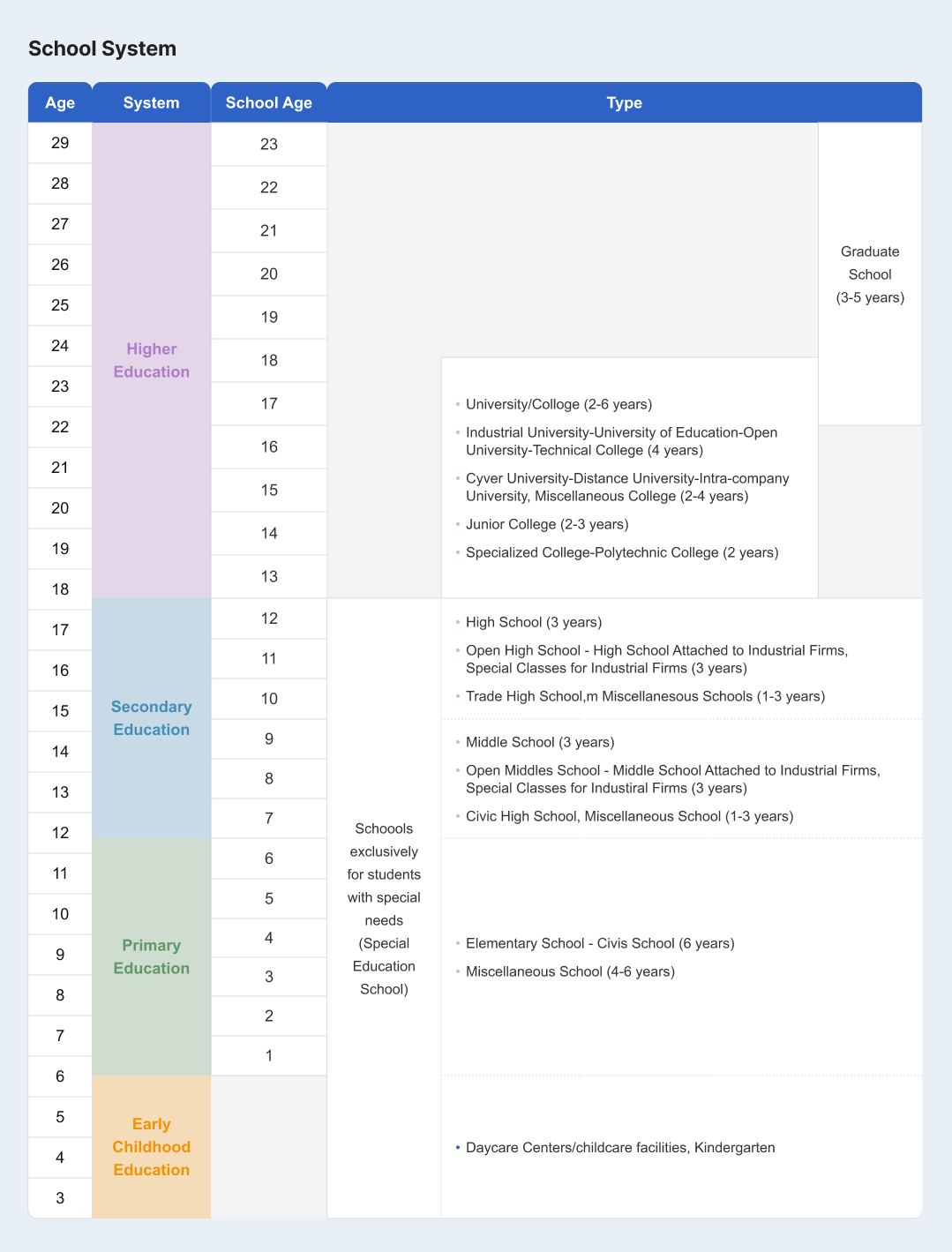Education system in Korea
Korean Education System

The Korean school system is comprised of a 6-3-3-4 single ladder system, 6 years in elementary schools, 3 years in middle schools, 3 years in high schools, and 4 years in university or 2 to 3 years at a junior college. The first academic semester begins in March, and the second academic semester at the end of August. Summer vacations are typically in July to August, and winter vacation in December to February. Elementary and middle schools are compulsory education. In accordance with the principle of equal educational opportunity, all citizens receive primary, secondary, and higher education according to their abilities, regardless of their social status or position.
Source : 2023 Education in Korea

